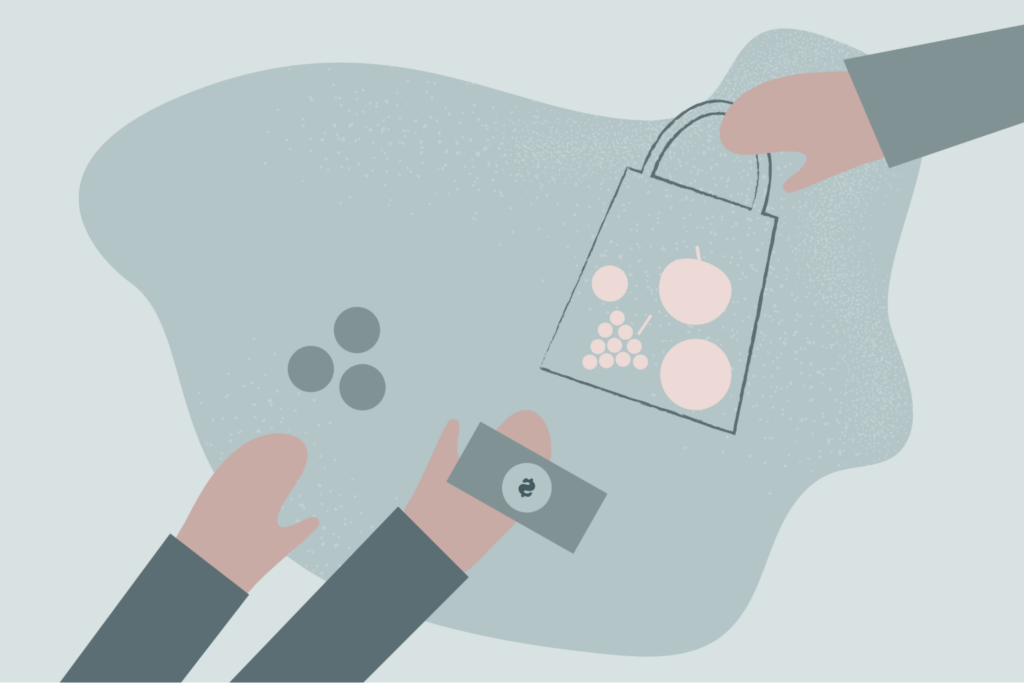
When I was nine years old, my baseball league had a competition. Whoever sold the most chocolate eggs for Easter would win an electric scooter worth $100. As a nine-year-old, $100 was a fortune, and there was no chance I would ever get that much money without the competition.
However, it meant going door to door selling chocolate eggs, and I was shy.
I didn’t even like ringing the doorbell when I got to my friends’ houses, preferring for them to see me coming and open the door. But I sweated it out and did it. I really wanted that scooter, so I sold like $500 worth of chocolate eggs—mostly to people who felt bad for me because I was so terrible at selling.
Now let me be clear: I am not knocking people who are good at direct sales. I respect that skill a lot. To have the confidence to not worry about people telling you “no” and just going for it is awesome.
But I imagine there are a lot of people out there who don’t like being rejected, even if it’s just by a potential client or someone who doesn’t want your product.
So when we started Interact, I did try direct sales—and it really didn’t work. Only .2% of the people we reached out to actually bought from us. That is not sustainable.
What happened instead, though, was we saw a different method of pitching driving results—and it didn’t involve selling anything directly.
I call it the “help first approach.”
Here’s how it works:
- Identify the type of clients you want to work with
- Choose some influencers to reach out to and work with them without charging
- After you work with them and make sure their experience is delightful, ask if they would refer others to work with you (and pay you)
How to execute these steps:
1. Identify clients you want to work with
If you’re at the very beginning stages, you won’t actually know who you want to work with, and that is okay. Actually, that’s what happens to everyone. I recommend just sending emails to anyone you think might be interested in what you are offering and seeing who responds. That’s one way to figure out who your target audience is.
Later on, it’s helpful to formalize your target audience because it makes business decisions way easier. But it’s okay if this takes a while. We didn’t really focus in for like six years; sure, that probably cost us, but we just didn’t know who the right target customer was, so it took us a while to formalize it.
But when it came time to formalize who our target customer was, this cold-pitching process was vital. It made the decision so much easier for us.
If you want to read more about creating and honing in on customer avatars, check out our post: Boost Your Quiz Conversions with Customer Avatars.
Honestly, though, the most valuable strategy is just getting out there and connecting with people. You can run in circles forever trying to figure out the perfect customer persona, or you can start having conversations knowing that the problem will eventually take care of itself.
2. Choose influencers + offer your product or service for free

This is where things get controversial. I am NOT saying this is the only way, and I am NOT saying that you should necessarily do this forever. Caveats aside, for us at least, offering our product and the services to implement it for free was very helpful for multiple reasons.
First, we didn’t really know what the product needed to be, and working directly with people helped us figure out how to build something useful and sellable.
Second, since we were building software, it took a long time to get it to a point where it was easy to use. By helping people one-on-one, we avoided having to build a bunch of features and other functions when making our product. That was a life-saver. When you’re trying to build any kind of product, it’s not the best idea to wait until it’s all built to start selling it. If you sell simultaneously, you can fix the gaps by doing things manually in the meantime.
If you’re not sure who to select, here are some general criteria.
- Choose people who you think you’d like to work with (or who are interesting to you)
- Choose people who have been in business for at least a year
- Choose people who have a minimum of 1,000 social followers (this will ensure they’re big enough to influence others)
But feel free to add or subtract whatever makes sense for you. There is no right or wrong way; those are just our criteria.
Then, send your outreach email. In this category, there are a couple of critical steps.
- Make it clear what you are offering and how it will help the person you are pitching
- Make it clear that there are no strings attached (and your reason for emailing them)
For example:
Title: (Your Product) Partnership
Hi (Name),
(Your Name) here, founder of (your company). We help people (whatever it is you do).
I’m reaching out because I wanted to offer a partnership in which (you offer your product or service for free), in return for your feedback and advice on what we’re doing.
If you end up liking it, we have a referral program, so you could earn by sharing it with other people, but that is totally optional.
Let me know if you are interested!
That’s it—super simple. You are offering your service because you want feedback and advice. You want referrals too, of course, but that’s not required. Win-win, and nobody gets hurt.
3. Ask for referrals if the influencers are delighted with the experience
If the people you worked with are delighted, go ahead and ask for referrals. I always recommend being open about what you’re doing and being kind to everyone involved. Meaning, let them know that while some people are receiving a free service, others (potentially their friends) will have to pay for it.
The trade-off for the person who is getting the service for free is that they’re risking their time—there’s always the chance that the service might not work for them. The person who is paying for the service, though, is taking less of a risk becuase they’re getting a direct recommendation and feel confident that the service will work for them.
So, after I go through the process of helping someone use Interact and implement it, I simply ask if they’d like to be an affiliate and refer others who might want to use Interact. Honestly, we don’t even hold people to it, but there is a very strong correlation between when someone has a great experience working with us and how many people they refer. We worked directly with people five or so years ago who are still referring clients to Interact, even if they aren’t using it themselves anymore.
I want to chalk that up to the fact that people appreciate it when they get a good product or service that actually solves a problem and isn’t just about adding to the bottom line. At least, that’s what I believe.
How this all played out at Interact (storytime).
Phase 1: Before we had customers
In the beginning, before Interact existed, we had no idea how to get clients. The first thing we tried was pitching directly, trying to sell people on the idea of having a quiz for list building, but no one wanted to pay much for that. When we did sell (two) people on it, they wanted all sorts of customizations on their quizzes. That was never going to work; the efficiency was broken.
So then the next thing I tried was offering to build a quiz with people for free, just to see if we could get anyone using the product. I sent thousands of emails like the one below (following all privacy laws, of course).

The emails were dripping with timidity. Yes, I am a shy and introverted person. But that’s the whole point of this post. It was an arduous game. Even with the free offer, there were very few yeses. And it took a very long time to build out quizzes for the people who did say yes, but it was validation because we weren’t getting signups from anywhere else, and at least this was an indication that someone was interested in what we were doing.
I think that’s the most important reason to start with, and always continue with, doing outreach. It’s reassuring to know that people are interested in what you’re doing, and they will give you feedback and advice on your product—your customers simply can’t do this because they have a different perspective.
Another important learning from this phase was to notice who was actually interested in what Interact had to offer. We first thought that bloggers would be most interested in the product, but it quickly became clear that coaches and course creators were most ready to use and benefit from the quizzes. That data is not something we could have found out without getting direct feedback in some form, and cold pitching was the fastest way to get there.
Phase 2: After we had customers
After we made some progress and some people had started using Interact, we switched up our strategy slightly but kept doing cold pitching.
The only thing that really changed is we then had some examples of quizzes to share, quizzes that were doing well. We also had an affiliate program for people who had a good experience to invite others.
To this day, whenever we want to enter a new market, I reach out to people with this offer to learn, to grow alongside, and to discover what’s new and important in the world of our customers. Any time we need to learn and grow, we reach out like I did in the below email.

This type of cold pitching is also very effective (albeit slow and a lot of work) at getting word-of-mouth marketing, which Interact thrives on.
In Conclusion:
There are probably many of you out there who are like me and just aren’t good at selling directly because it’s not what you enjoy. I hope this post helps you. My cold pitching method will help you to get the full benefits of selling without having to go directly to people asking for money. It has worked well for us, and I encourage you to give it a go!